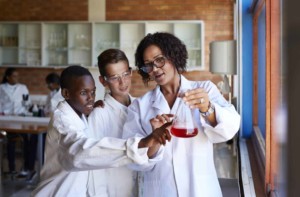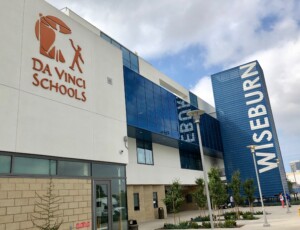Distance Learning: Boosting College-, Career-, and Life- Readiness

One recent Wednesday morning, Kendall was having an issue finding information on when her asynchronous lesson assignment was due. She looked in her online learning management system, but could not find the answer. Instead of this derailing her work, she opened up her Canvas course, went to the inbox, found her teacher’s contact information, emailed her teacher, got a quick reply, and was able to complete her assignment on time.
Kendall is a nine-year-old third grader who had never previously sent an email on her own.
The shift to online learning has catalyzed the need for students to be more independent in structuring their own time and schedules, managing their responsibilities, and advocating for their needs. And these changes in learning modalities and the skills necessary to engage in that learning have affected students of all ages. Even our youngest elementary students are being expected to utilize executive functioning skills often not developed until high school or college.
So much coverage and analysis of the school closings due to the pandemic over the past many months has focused on the deficits and gaps being created and widened by the condensed school hours and time spent learning online. Missing from these conversations, however, is a recognition that even though our students may not be covering the same quantity of content or sticking to a traditional school year scope and sequence, they are developing college-, career-, and life- readiness skills and lessons as they adapt to this unique mode of learning. Through this work, our school systems are nurturing a cohort of students that are actualizing the call for 21st Century Skills that educators and policymakers have been describing as a fundamental priority for decades.
Responsibility & Independence
In a traditional year, the shared classroom experience provides students with social and physical cues to encourage them to stay on task, participate in appropriate and productive ways, and transition between activities. With the migration of learning to the virtual environment and changes to in-person learning to ensure compliance with physical distancing requirements, many of these external reminders and prompts are no longer present or clear. Students of all ages are developing new skills to keep track of their schedule, engage in learning, and complete assignments in the expected format on the appropriate submission platform. Students are practicing setting timers to know when to rejoin their class for learning. They are using cameras to screenshot important slides and images during instruction. They are creatively recording videos to show evidence of their learning rather than simply turning in a worksheet. Though, of course, there are struggles as students learn what works through trial and error, the current learning environment allows for ample opportunities to practice and refine these skills.
Voice & Self-Advocacy
Prior to the pandemic, teachers and staff were more easily able to check in on students’ understanding of new concepts, progress on assignments, and their day-to-day mental health and wellbeing. With fewer opportunities for casual check-ins and informal assessments, the onus for reporting a challenge or a struggle now falls primarily on the student. It is no longer immediately obvious to teachers when there is a problem, particularly for students learning at home. Students are realizing that, in order to move forward, they must take ownership of their learning, using their voice to speak up and clearly articulate the problem in order to receive help. In response, students are working to develop new abilities to vocalize issues that arise, ask questions about content, and communicate any uncertainties about processes and procedures for completing work. This practice in self-advocacy will serve students well beyond this school year and in all spheres of their life.
Flexibility & Resiliency
The pandemic has forced all of us to make drastic shifts in how we go about our daily lives. This has meant that we have redefined what it means to go to school and to learn multiple times in a matter of months, completely upending our students’ sense of schooling and how it should look and feel. Amidst these transitions and changes, our students have seamlessly and without disruption quickly adapted to the structure and modality of the moment. During typical school years, teachers spend considerable time and energy preparing students in advance of major shifts and transitions. In order to get them ready for an upcoming change, teachers might have conversations about expectations, read relevant books, or share a clear, visual timeline or countdown. These recent pandemic-related changes, however, have been forced on our students with little notice and with no assurances for any longevity of a current plan. The flexibility that our students have shown across these transitions is extraordinary. They have displayed great resiliency, readily following each new plan, quickly adapting, and working alongside their teachers and peers to navigate the new situations and circumstances.
And they are practicing this flexibility throughout their days. Students learning from home have learned to remain calm through technical issues. Students learning from the classroom have learned to be patient as they learn new routines, structures, and rules that work to keep them safe. And students in a hybrid model have learned to quickly adjust as teachers try to navigate multiple learning environments or multiple learning pods, often within the same day, and sometimes simultaneously. In the face of many potentially frustrating moments, our students have responded with grace and understanding–overcoming obstacles and continuing to show up Zoom after Zoom, day after day, ready to learn.
Problem-Solving & Technology Skills
Early on in the pandemic, our days seemed to be filled with more chaos and confusion than structure and answers. As teachers were redesigning learning to fit new formats, students were right alongside them, figuring out how to learn via computer, communicate with their teacher, and collaborate with their peers–with no prior model from older students or lessons learned from past years. Moments of stress and frustration grew out of a long list of new digital platforms to learn and lost videoconferencing connections. And doing this alongside peers, who were also struggling and adapting, added to the overwhelming moments for students, teachers, and families.
Over the past many months, students have worked to strengthen and develop robust problem-solving skills in response to these challenges. Students of all ages now easily navigate learning management systems and educational apps. When problems arise, many students have learned to respond by looking for solutions rather than panicking. Students now know to expect the unexpected. Teachers have consistently modeled a calm response, helping them to think critically and creatively about ways to work around problems and find a resolution.
And this deep immersion in utilizing technology to learn has required many students to become so adept with digital tools and resources, at a very young age, that they are able to use technology to showcase and deepen their learning through collaboration and creation. Rather than simply using digital tools to consume information, these students are using technology to expand the learning experience.
Shifting Perspectives: Redefining Learning and Growth
This transition to online, hybrid, and physically-distanced learning has been challenging for all involved. We should applaud our students for the steps they have taken to take ownership of their learning and to advocate for their needs in order to stay engaged. They have displayed flexibility and resiliency with each new wave of information and change. They have become experts at troubleshooting and creatively showing what they know. And all of this growth and development is possible because of our teachers’ thoughtful encouragement, unending patience, and unrelenting focus on student growth and well-being.
While few of these skills are formally assessed or documented on traditional report cards, these new capabilities will have large and far-reaching impacts on future success. These students will be prepared to navigate unexpected issues, problems, and changes in circumstance, utilizing the skills they are developing now. As teachers and parents who are prone to worry that our students are falling behind, we must acknowledge and celebrate students’ progress and development in these areas. These experiences will serve our students far beyond this season of learning; for they are foundational to future college, career, and life success.
For more, see:
- Virtual Agreements Help Mitigate Cheating in My Online Classroom
- “I Could Never Do This Alone” – Collaboration, Trust, and Human-Centered Design at Design39
- Dr. Donna Housman on Mental Health and Wellbeing
Stay in-the-know with innovations in learning by signing up for the weekly Smart Update.







0 Comments
Leave a Comment
Your email address will not be published. All fields are required.